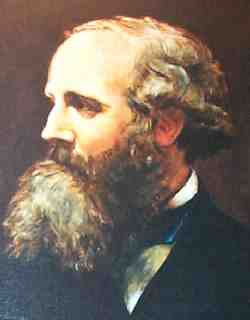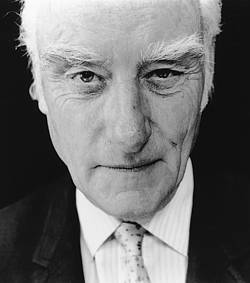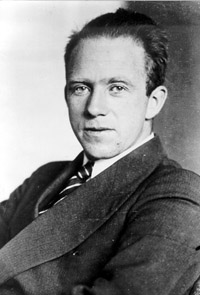 "The most beautiful thing we can experience is the mysterious. It is the source of all true art and all science. He to whom this emotion is a stranger, who can no longer pause to wonder and stand rapt in awe, is as good as dead: his eyes are closed."
"The most beautiful thing we can experience is the mysterious. It is the source of all true art and all science. He to whom this emotion is a stranger, who can no longer pause to wonder and stand rapt in awe, is as good as dead: his eyes are closed." -- A. Einstein.
Among 20th century scientists, Albert Einstein has probably spawned the most virulent worldwide cult following, and he has left a rich folklore of life legends -- but unlike the heroes of some cults, this result somehow seems appropriate, given the way in which Einstein has forever altered our notions of space and time.
Born on this day in 1879 in Ulm, Germany, as a child, Einstein was fascinated by his father’s demonstration of a compass, with its needle which seemed to have a mind of its own, and with a little book on Euclidean plane geometry -- both of which gave him a sense of the deeply hidden forces which defined physical reality. Einstein’s father had a none-too-successful electrical business, first in Munich and later in Milan. While in Milan at the age of 16, free from the restrictive environment of formal schooling, Einstein taught himself calculus and higher mathematics, and later entered the Polytechnic Academy in Zurich.
He settled in Switzerland after school, taught mathematics and physics, and then became a patent examiner at the Swiss Patent Office, during which time he wrote several theoretical physics articles and obtained his Ph.D from the University of Zurich. By 1909, as a young University of Zurich professor, he was regarded as a leading scientific thinker.
As early as 1905, however, while still isolated from the physics community in his job as a patent examiner, he had written three papers which made astounding creative advances in the area of physics. The first, called
The Special Theory of Relativity, was an overhaul of the classical principle of relativity, which held that the laws of physics had to have the same form in any frame of reference. Einstein postulated that the parameters of motion, time and space could not be absolute because they are measured relative to the observer (alluding to the work on transformation equations done by H.A. Lorentz), yet he reasserted the assumption that the speed of light itself remained constant in all frames of reference, as
James Clerk Maxwell had argued. Through the imaginative combination of disparate ideas proposed by other physicists, Einstein began his critique of generally accepted concepts of space and time, and created for the first time a unified theory which could explain the apparent contradiction between Maxwell’s electromagnetic theory and classical relativity theory.
In addition, these exercises led Einstein to posit that mass is a direct measurement for the energy contained in bodies (crystallized in his famous equation E=mc²), in that mass decreases proportionately if a body emits a certain energy.
The Special Theory of Relativity turned out to be essential to our understanding of the interactions of atomic and subatomic particles.
His second paper,
The Quantum Law of the Emission and Absorption of Light, contained Einstein’s proof of Max Planck’s quantum theory, which provided that total energy was not a continuous variable, but rather a flow of distinguishable energy elements, or "quanta" of energy. After initially expressing some skepticism over Planck’s theory (summing up his objections to certain interpretations of it by declaring,
"God does not play dice"), Einstein applied quantum theory to the electromagnetic radiation of light and used it to explain anomalies in fluorescence and photo-ionization, taking the bold step of representing light as a stream of particles with a quantifiable energy value. The work is considered to be one of Einstein’s most important, and in 1921 he won the Nobel Prize for it, donating the prize money to charity.
In the third paper,
Theory of Brownian Movement, Einstein provided a mathematical formula to predict the path and speed of minute particles suspended in liquid, confirming atomic motion as the cause for the movement of such particles by providing a "proof" of the existence of molecules.
He served in professorships in Prague, Zurich and Leyden before being appointed director of the Kaiser Wilhelm Institute (established by Walther Nernst in 1894) in 1914. In 1915 he published his
General Theory of Relativity. An extension of the
Special Theory of Relativity, Einstein postulated that gravity and the inertial force of a system in acceleration (the heavy feeling of your own weight that pushes you against your seat when you accelerate quickly in a car, for instance) are indistinguishable. Leading from this premise, Einstein concluded that gravity was not simply a force in nature as
Isaac Newton had argued, but a warping of space and time by physical mass. Because mass exists, space must be curved -- thus, Einstein predicted, light from a far-off star passing close by the Sun should be bent by the Sun’s great mass.
Before the scientific community could react to the theory, World War I broke out, causing Einstein to quip,
"If my theory is proved correct Germany will hail me as a great German, and the French will call me a citizen of the world. If it is proved false, the French will call me a German and the Germans will call me a Jew." In 1919, astronomers verified Einstein’s predictions regarding the gravitational effect on light, and thereupon Einstein became an instant celebrity; the headlines in the
London Times shouted in large print "Revolution in Science -- New Theory of the Universe -- Newtonian Ideas Overthrown," and Einstein received the Copley Medal of the Royal Society and the Gold Medal of the Royal Astronomical Society.
The far-reaching implications of Einstein’s theory launched modern cosmology, providing an explanation for the expansion of the universe and foreshadowing the notion of black holes among other things. Following a heart attack prompted by overwork, in 1929 Einstein published two papers explaining his Unified Field Theory which attempted to unite the theories of gravitation and electromagnetism, but the experimental work which it spawned was inconclusive. He continued to hold out hope that a true model of reality, not merely of a probability of reality as provided by quantum theory (as advanced by Niels Bohr), could be formed; but as Bohr and quantum physics dominated the field, Einstein’s scientific influence declined somewhat.
With the rise of the Nazis in Germany, Einstein came under increasing fire. Lending an overripe vitality to Einstein’s predictions about German attitudes regarding his work, Adolf Hitler denounced Einstein as a Jew and insinuated that Einstein must have stolen his theories from a German Army officer who died in World War I. Finding his property confiscated and his books burned by the Nazis, Einstein emigrated to the U.S., settling at Princeton University. In 1939, at the urging of Leo Szilard and others, Einstein wrote a letter to President
Franklin Roosevelt advising him that the U.S. had the potential to build an atomic bomb, a project about which he had moral reservations but which he felt was necessary to defeat Hitler -- before the Germans could produce their own atomic warfare. The letter resulted in the launching of the successful Manhattan Project under the direction of J. Robert Oppenheimer.
In later years, Einstein wrote about pacifism, political and moral topics, and in 1952, he was offered the presidency of Israel, but declined. Following the rupture of an aortic aneurysm, Einstein refused surgery, declaring
"I want to go when I want. It is tasteless to prolong life artificially." He died on April 18, 1955 in Princeton, New Jersey.
With his wild shocks of gray hair, droopy mustache and benign countenance, in some ways Einstein’s persona has come to define the 20th century identity of the creative genius, the personification of all "Einsteins" who meditate on the Universe and articulate their visions. Einstein the 20th century folk hero can be felt in such diverse creations as Nicolas Roeg's 1985 film
Insignificance (in which Theresa Russell, as a Marilyn Monroe-like character, demonstrates the theory of relativity to an Einstein-like character); Philip Glass' 1979 opera
Einstein on the Beach; Yahoo Serious' 1988 slapstick farce
Young Einstein (in which a stick-figure Einstein is made to fall in love with a fictionalized
Marie Curie); an appearance in
Bill & Ted's Bogus Journey (1991); Steve Martin's 1997 play about a fictional meeting between Picasso, Einstein and
Elvis,
Picasso at the Lapin Agile; and Walter Matthau's impersonation of Einstein-as-cupid in the lukewarm 1994 romantic comedy
I.Q.Labels: Physicists, Pop Culture










 Marie Curie's triumph -- of initiating the field of radiochemistry and a greater understanding of the structure of the atom -- is one of intellect and an obsessive-compulsive personality over adverse circumstances. To begin with, she was born a woman, and in 19th century Europe, the only time a bearded scientist wanted a woman in his laboratory was when it was time to serve him tea and cakes, or time to clean up after tea and cakes. Secondly, she was born in Poland -- not as unlikely as, say, Madagascar for its time, but yet it was only a mere province of Russia, and hardly the world's center of scientific learning.
Marie Curie's triumph -- of initiating the field of radiochemistry and a greater understanding of the structure of the atom -- is one of intellect and an obsessive-compulsive personality over adverse circumstances. To begin with, she was born a woman, and in 19th century Europe, the only time a bearded scientist wanted a woman in his laboratory was when it was time to serve him tea and cakes, or time to clean up after tea and cakes. Secondly, she was born in Poland -- not as unlikely as, say, Madagascar for its time, but yet it was only a mere province of Russia, and hardly the world's center of scientific learning.




